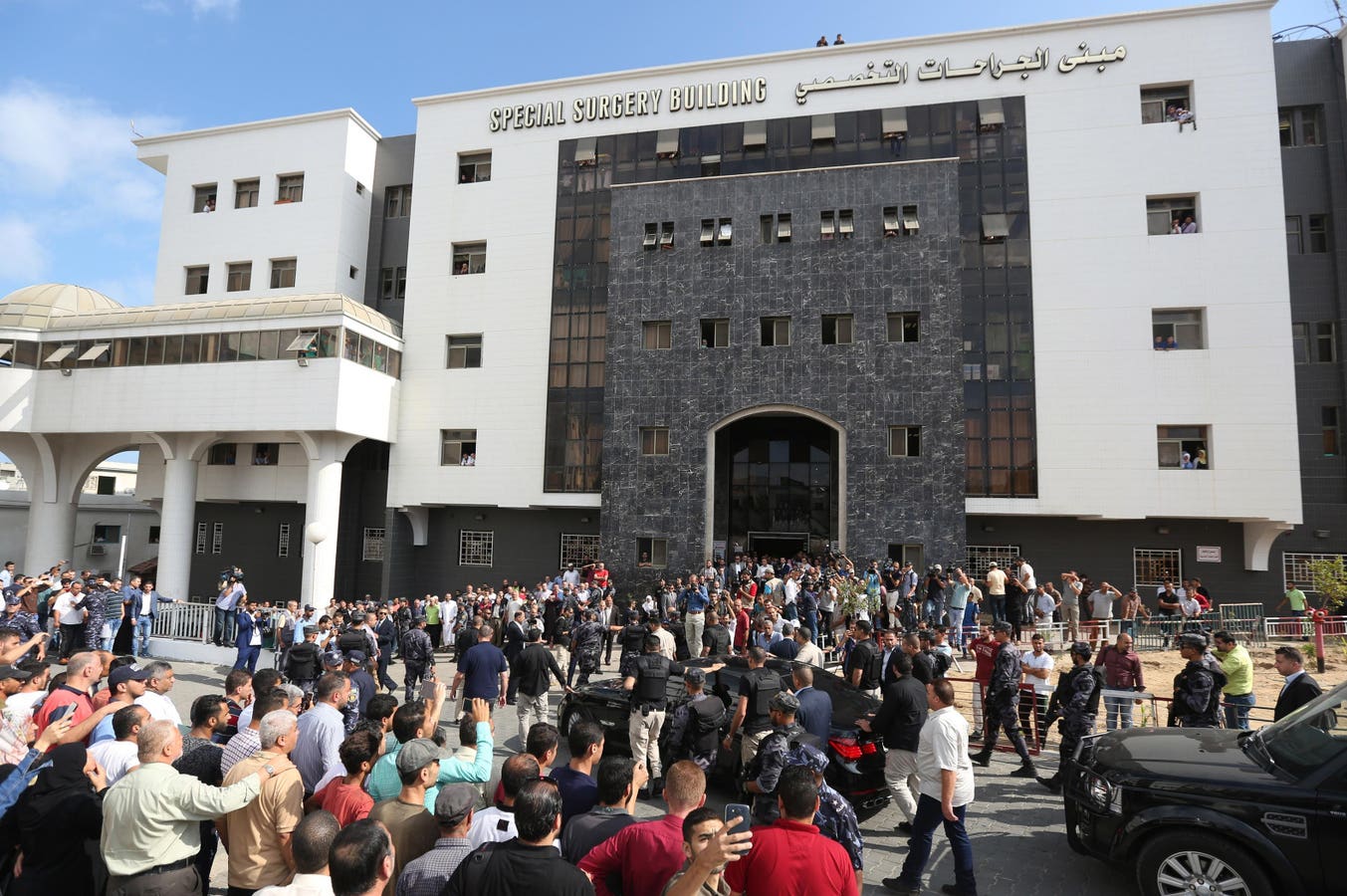On Friday, the Israel Defense Forces (IDF) asserted that Hamas has a command center under Shifa Hospital in Gaza City. Technology may be able to vet the claim.
IDF Spokesman Rear Adm. Daniel Hagari told international media that Hamas has constructed several underground complexes beneath Shifa Hospital – the largest hospital in the Gaza Strip – which it is using for command and control. Hagari presented visual depictions of the complex locations and tunnels that serve them as well as intercepted audio as evidence of the terror organization’s underground activity.
“Right now, terrorists move freely in Shifa Hospital, and other hospitals in Gaza,” Hagari said.
The IDF’s spokesman said information on Hamas’s use of the hospital was gathered from a wide range of intelligence sources collected by the Military Intelligence Directorate and Shin Bet security agency. That intelligence has already been provided to allies he added.
Hamas denies the allegations. Izzat al-Rishq, a senior member of the Hamas political bureau told The Times of Israel, “There’s no basis in truth in what the spokesman of the enemy army said
.”
But Hagari told the media that Israel has “concrete evidence” that “hundreds of terrorists flooded into the hospital to hide” following the Oct. 7 massacre in which Hamas terrorists burst through the border and slaughtered roughly 1,400 people in southern Israel. He added that Israel has intelligence of underground tunnels from outside the hospital leading to the complex, enabling Hamas commanders to move to and from it.
Hagari asserted that there is also an entrance to the underground complex from within one of the wards. What tools could Israeli intelligence use to gather such information?
The most obvious is human intelligence (HUMINT). Cultivated informants inside Gaza may have provided clues regarding the structures underneath Shifa as could “walk-ins” – people inside Gaza volunteering information. But anyone doing so faces extreme risk from being caught by Palestinian officials or Hamas itself.
However, a number of recent essays have noted that Israel’s sources inside Gaza and the West Bank have dried up in the last 15 years. The Associated Press noted that when Israel withdrew troops and settlers from the Gaza Strip in 2005, it was stripped “of a close handle on the happenings in the territory”.
That leaves technology. One of the foremost tools in Israel’s kit is Pegasus, commercial spyware developed and sold by the Israeli company, NSO Group. Pegasus capitalizes on mobile devices, capable of installing itself on a phone without requiring users to click a link. It reportedly gives hackers complete access to the entire contents of the phone, as well as the ability to use its cameras and microphone undetected.
Pegasus may have been the source of the intercepted audio RADM Hagari mentioned and which Israel posted on X (Twitter) last Thursday.
Overhead sensing via satellite is another possible means of detecting structures and activity underneath and around Shifa Hopsital. Synthetic Aperture Radar (SAR) satellites are able to detect changes in the earth’s surface down to a few millimeters. This allows them to identify signs of subsurface construction, the slight settling or bulging of the ground that can occur above an underground structure.
Israel operates TecSAR-1 (Ofeq-8), a reconnaissance satellite launched in 2008. It’s equipped with a SAR developed by Elta Systems. EROSAR 1, a SAR-enabled satellite launched in 2022 has more advanced capability.
Gravity-measuring satellites can detect tiny variations in the earth’s gravitational field that can be caused by the presence of a large, dense object underground, such as a bunker. Thermal imaging satellites can detect heat anomalies on the earth’s surface, for example, an underground facility might give off excess heat particularly at night that could be detected.
Satellite sensing is not fully reliable, potentially complicated by factors including the depth of the underground structure, the type of soil, and weather. Satellites generally offer indirect evidence of an underground structure.
But seismic imaging and surface-based ground-penetrating radar can add to other evidence. As far back as 2014, there was discussion of Israeli use and development of such radar in Gaza. Aerial scans – both thermal and radar based – are possible from drones and sophisticated aircraft including the Israeli Air Force’s Oron intelligence-gathering jet.
Electromagnetic induction, essentially metal detector-like sensing, can be used to detect wiring underground if complexes or tunnels are provided with electric lighting systems. The U.S. has delved into all of the above methods for finding and characterizing underground structures and has collaborated with Israel in yoking technologies to such efforts.
Independently verifying whether there is a large Hamas bunker underneath Shifa is highly difficult but there is precedent for the use of hospitals as shields for both weapons deployment and command and control by Hamas. As the war in Gaza unfolds, we will very likely confirm or refute whether Hamas’ is operating under the biggest hospital in Gaza.
Read the full article here





